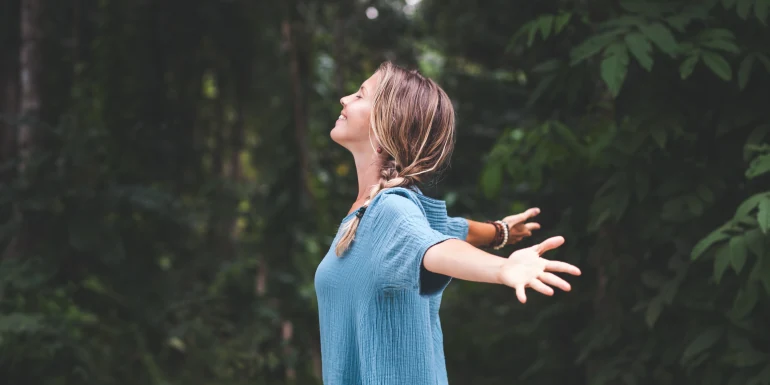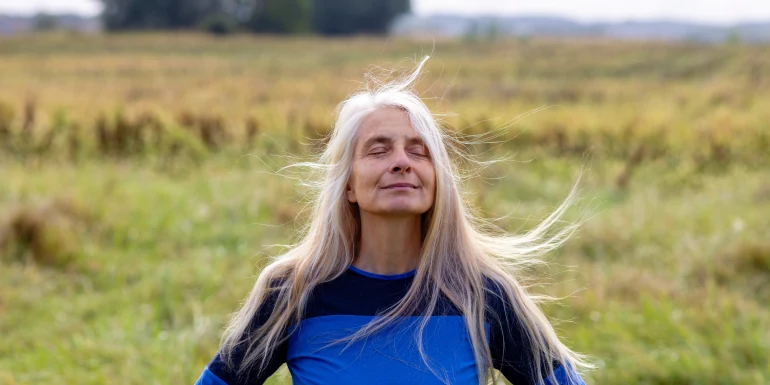
The best relaxation exercises to combat stress
A stressful lifestyle can cause sickness. Learning how to relax is not a luxury, but a must! Do a few relaxation exercises every day. They’ll give you a boost and reduce stress. Eight methods explained simply.
Our everyday lives are highly demanding. Pressure to achieve, deadlines, personal burdens – permanent stress can be harmful for our body and mind.
Why relaxing is important
It is essential for every person to have moments of peace and deep relaxation. If there is no longer a good balance between exertion and relaxation, we are less able to perform and our well-being and health are at risk. This is because, under stress, the body releases stress hormones such as adrenaline and cortisol. Without subsequent relaxation, the body cannot break down these hormones. This can result in high blood pressure, digestive problems, tension, chronic headaches, sleep disorders and burnout. Pay attention to the messages your body is sending you.
Relaxation exercises have a positive effect on your body and mind
Targeted relaxation leads to a state of inner peace. This has a positive effect on your concentration and your body. Deep breathing lowers your pulse and blood pressure. Your muscles relax, so more oxygen flows to your organs. The body produces happiness hormones, which help to reduce stress.
Those who internalise relaxation exercises are better able to deal with stress. Stressful situations cannot be avoided – what matters is how we deal with them. Regular relaxation exercises make us calmer, more attentive and resilient.
Finding the right methods to reduce stress
There are several ways to relax: going for a walk, taking a warm bath, listening to music, enjoying a personal hobby. You can also try out special relaxation techniques that have a lasting soothing effect, such as meditation, yoga, autogenic training and progressive muscle relaxation. And best of all, it’s never too late to learn how to relax. Autogenic training and progressive muscle relaxation are especially suitable for beginners. When doing these two methods, your mind wanders less than when doing meditation.
Our health consultation advisors would be happy to give you more information about the various relaxation methods and tell you about our health apps.
Which relaxation exercises work quickly?
It doesn’t matter which relaxation exercise you choose – the important thing is that you actually do it and regularly try to relax. Find out which relaxation technique works best for you and can fit regularly into your everyday life. After all, only practice makes perfect.
Eight relaxation methods in brief
Breathing exercises are a simple and effective way to help alleviate the negative effects of shallow breathing and help you relax better. Breathing is an automatic process. But our thoughts and feelings influence our breathing. For example, our breath is restricted when we are experiencing stress, are not getting enough exercise or have bad posture. Possible consequences include headaches, increased fatigue and tension. Breathing exercises train you to be aware of your breath. This has a positive effect on your entire respiratory function and results in better oxygen supply. A natural breathing rhythm also compensates body tension. You can learn and practice breathing exercises in courses.
Breathing exercises to combat stress
"My arms and legs feel very heavy." This is how an autogenic training session begins. You relax using the power of your thoughts – without any aids. The aim of this relaxation technique is to be able to relax at will, at any place and any time. It can be performed while reclining or sitting. This makes it easy to integrate the relaxation method into everyday life, at home, on the tram or train, or at work.
Autogenic training tutorials
The Feldenkrais method aims to promote physical, emotional and mental well-being through improved body awareness and movement. It was invented by Israeli physicist and psychologist Moshé Feldenkrais (1904-1984). His core belief was that thought, feeling, perception and movement are interrelated and influence each other. Adverse movement patterns are detected and adjusted. This relaxation technique is suited to the treatment of conditions such as chronic pain, stress and tension, or simply to improve general well-being. It may be learned independently or as part of a course.
This relaxation technique was developed by Australian actor Frederic Matthias Alexander. He discovered for himself that posture, movement and thought patterns are all interrelated. These patterns should be recognised and positively influenced through self-awareness. This therapy helps with various functional disorders, psychosomatic and stress-related disturbances, breathing and mood problems, chronic pain, illness and the consequences of accidents, and is suitable as an accompanying measure in pregnancy and after birth. The method is also proven as a preventive measure and enhances quality of life.
MBSR stands for Mindfulness-Based Stress Reduction. Mindfulness is about remaining in the present moment and being attentive. You learn not to get caught up in your thoughts, make judgements or fall prey to worries or anxiety. Beginners can learn the technique in an eight-week MBSR course. Mindfulness training is suitable for people who are under stress, suffering from acute or chronic illnesses or pain, or affected by psychosomatic troubles (sleep, digestion, etc.), anxiety or mood problems.
The principle of Edmund Jacobson's progressive muscle relaxation technique is simple: certain muscle groups are deliberately tensed for a short time, one after the other, and then released abruptly. After the tension, and with each exercise, the relaxation is perceived more intensively and consciously. Blood pressure drops, the pulse slows and breathing calms down. The technique is relatively easy to learn because it does not require much concentration. It helps with many physical and psychological problems such as stress, pain and sleep disorders.
Simple relaxation exercises
Meditation is a method of relaxation based on mindfulness and concentration that is thousands of years old. Several meditation techniques exist: physically active forms include yoga and walking meditation, while physically passive forms include mindfulness training (e.g. Vipassana, MBSR) and transcendental meditation. Meditation and mindfulness exercises have a positive effect on our whole body. They allow us to deal better with stress and to experience inner peace and equilibrium. These psychological factors in turn influence bodily functions such as blood pressure and the immune system.
Learn deep relaxation
Yoga helps you to find peace using a variety of techniques. This relaxation method combines “asanas” (postures), stretches and breathing exercises. Controlled breathing promotes mindfulness and leads to inner peace. At the same time, deep stretches relax our muscles, ligaments and connective tissues. In short, you’ll become more flexible and calmer.
Relaxation courses – covered by Helsana
COMPLETA supplementary insurance covers 75% of the costs of recognised health promotion courses, up to a maximum of CHF 200 per year. Find out what benefits are included.
Which relaxation technique suits me?
That depends entirely on your preferences. When do you feel good? In peace and quiet? Or when you are active? It can also be very inspiring to try out the opposite. New experiences stimulate other senses and regions in your body. In short, try out a few types of relaxation. You will very quickly find out if the method suits you – and if you can incorporate it into your daily life. If so, you won’t have to wait long until you benefit from its positive effects.

Evelyne Dürr (Msc in Human Movement Sciences, ETH; CAS workplace health promotion) joined Helsana in 2014. As a health management specialist, she helps customers engage with prevention and health promotion. Evelyne Dürr gave the editorial team advice and input for this article.



Newsletter
Find out more about current health issues every month and get all the information you need about our attractive offers from all Helsana Group companies * delivered by e-mail to read whenever it suits you. Our newsletter is free of charge and you can sign up here:
We did not receive your information. Please try again later.
* The Helsana Group comprises Helsana Insurance Company Ltd, Helsana Supplementary Insurances Ltd and Helsana Accidents Ltd.